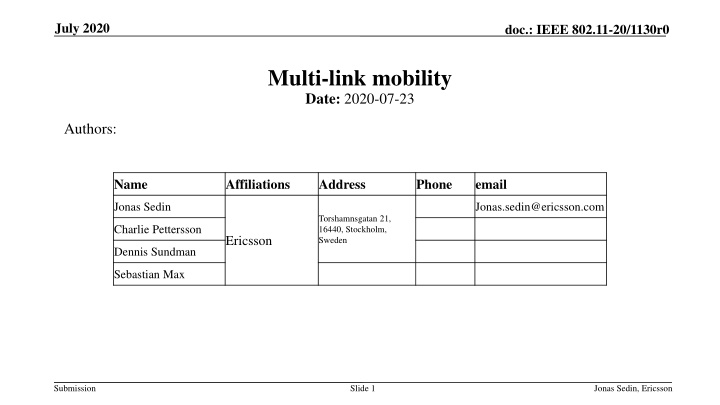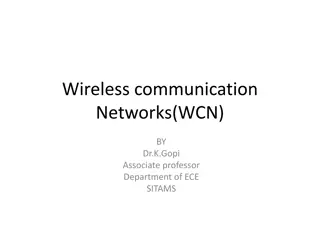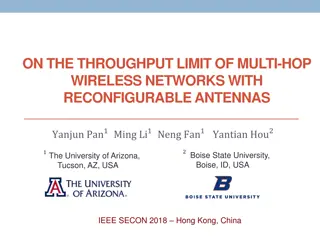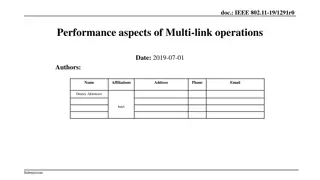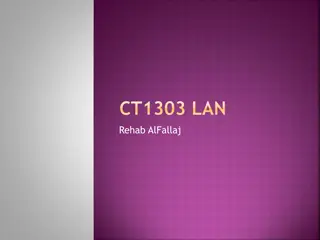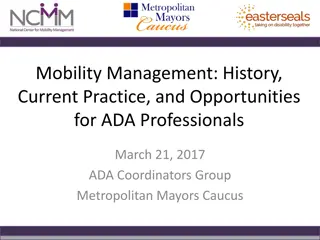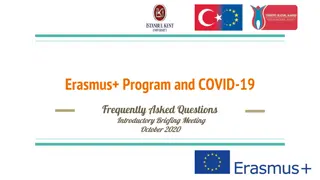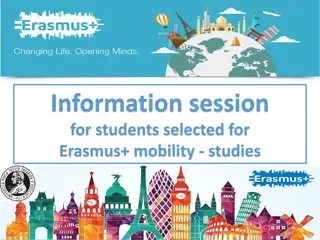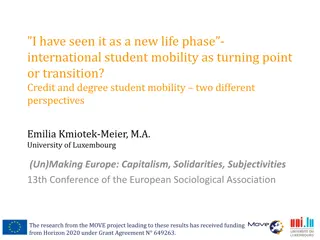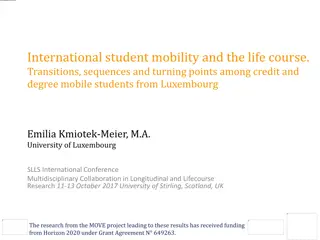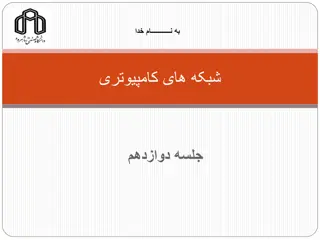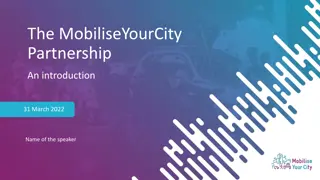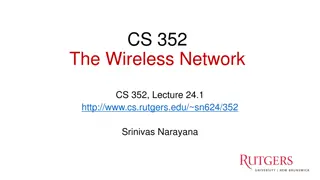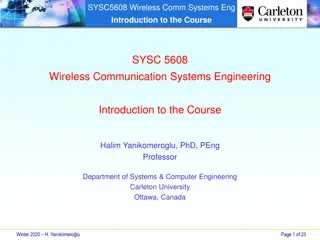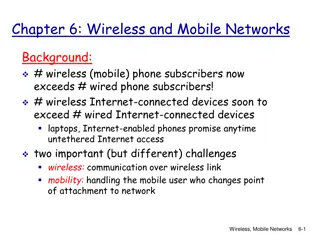Multi-Link Mobility for Enhanced Wireless Connectivit
This document discusses multi-link mobility in IEEE 802.11 networks, focusing on establishing robust and seamless connections by maintaining multiple links with target nodes. It explores the benefits such as improved reliability, reduced transition delays, and minimizing the ping-pong effect during handovers. With examples and insights, it delves into the idea of ensuring continuous data delivery and enhancing overall network performance.
Download Presentation

Please find below an Image/Link to download the presentation.
The content on the website is provided AS IS for your information and personal use only. It may not be sold, licensed, or shared on other websites without obtaining consent from the author.If you encounter any issues during the download, it is possible that the publisher has removed the file from their server.
You are allowed to download the files provided on this website for personal or commercial use, subject to the condition that they are used lawfully. All files are the property of their respective owners.
The content on the website is provided AS IS for your information and personal use only. It may not be sold, licensed, or shared on other websites without obtaining consent from the author.
E N D
Presentation Transcript
July 2020 doc.: IEEE 802.11-20/1130r0 Multi-link mobility Date: 2020-07-23 Authors: Name Affiliations Address Phone email Jonas Sedin Jonas.sedin@ericsson.com Torshamnsgatan 21, 16440, Stockholm, Sweden Charlie Pettersson Ericsson Dennis Sundman Sebastian Max Submission Slide 1 Jonas Sedin, Ericsson
July 2020 doc.: IEEE 802.11-20/1130r0 Introduction - Several scenarios require efficient mobility - In already existing use cases such as large public deployments - In future use-cases such as factory scenarios - FT protocol [1] is able to reduce the time to do roaming in a network, but will still incur transition delays Submission Slide 2 Jonas Sedin, Ericsson
July 2020 doc.: IEEE 802.11-20/1130r0 Introduction - Multi-link mobility - High-level idea: - In multi-link mobility at least one link with the target node is established before de-associating the MLD non-AP with the current node - This type of mobility could introduce mobility that could be robust, seamless and reduce the pingpong effect - In the following section we describe how already agreed features[2] of multi-link that would enable good performance for mobility Submission Slide 3 Jonas Sedin, Ericsson
July 2020 doc.: IEEE 802.11-20/1130r0 Introduction - Multi-link mobility cont. - Robustness - The reliability is increased due the reduced correlation in slow fading between two non-collocated nodes compared to collocated nodes as well as the diversity in the form of path loss - An example of signal strength changing is seen in the figure below when both links are on the same band but different channels Submission Slide 4 Jonas Sedin, Ericsson
July 2020 doc.: IEEE 802.11-20/1130r0 Introduction - Multi-link mobility cont. - Seamlessness - One could still receive data on one link while being connecting to another AP, and if packets are lost on one link, they could be retransmitted from/to another node. - This may partly enabled due to the fact that the BA agreement and TID is across multiple links. Submission Slide 5 Jonas Sedin, Ericsson
July 2020 doc.: IEEE 802.11-20/1130r0 Introduction - Multi-link mobility cont. - Reduction of the ping-pong effect - Normally handovers are based on comparing signal strengths between BSS and neighbouring BSSs and making a decision when the signal strength is above/below a certain threshold - The above may cause ping-ponging due to spotty coverage even with techniques designed to limit this - In multi-link, since we would still be able to send data on another link, the STA could be allowed to be significantly more sticky on a specific link this is also related to robustness aspect Submission Slide 6 Jonas Sedin, Ericsson
July 2020 doc.: IEEE 802.11-20/1130r0 Introduction General robustness - The earlier mentioned potential pros of multi-link mobility naturally leads us to the question of whether this is only applicable and/or beneficial for handovers - Robustness could be improved regardless of mobility if an MLD non-AP is connected to multiple MLD APs Submission Slide 7 Jonas Sedin, Ericsson
July 2020 doc.: IEEE 802.11-20/1130r0 Proposal - On associating with multiple MLD APs: - The spec is clear At any given instant, a STA is associated with no more than one AP. [1] - Main idea: - Allow the establishment of a MLD AP entity that spans multiple nodes (from the perspective of the non-AP), let us call it multi-link multi-node operation - From the non-AP perspective is still connected to a single MLD AP Submission Slide 8 Jonas Sedin, Ericsson
July 2020 doc.: IEEE 802.11-20/1130r0 Proposal cont. - MLD entity spanning multiple nodes: - 802.11be supports that if different affiliated APs of an AP MLD have different MAC addresses, then different affiliated non-AP STAs of a non-AP MLD with more than one affiliated STA have different MAC addresses. [Motion 112, #SP38, [9] and [86]] [1] - Question on the above is whether the affiliated APs are collocated or not proposal is that it should not mean that the affiliated APs are collocated Submission Slide 9 Jonas Sedin, Ericsson
July 2020 doc.: IEEE 802.11-20/1130r0 Proposal cont. - If non-AP MLD is establishing a new link it can request to establish a link at another node - If AP MLD is establishing a new link at a new AP node it would be not be visible for the non- AP MLD - Signalling example: - A field in multi-link setup that includes the address of the MLD AP that the non-AP MLD wants to established a multi-link multi-node connection with* - *given that both AP and non-AP is capable of this Submission Slide 10 Jonas Sedin, Ericsson
July 2020 doc.: IEEE 802.11-20/1130r0 Straw Poll 1 Do you believe that utilizing multi-link by establishing a MLD AP across multiple nodes for mobility purposes should be considered for either R1/R2? Yes/No/Abstain: Submission Slide 11 Jonas Sedin, Ericsson
July 2020 doc.: IEEE 802.11-20/1130r0 References [1] 802.11-2016 Wireless LAN Medium Access Control (MAC) and Physical Layer (PHY) Specifications [2] https://mentor.ieee.org/802.11/dcn/19/11-19-1262-11-00be-specification- framework-for-tgbe.docx Submission Slide 12 Jonas Sedin, Ericsson
